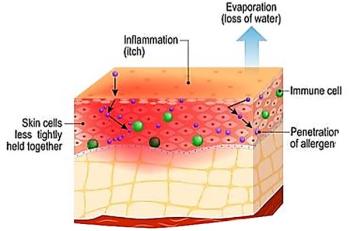
The Journal of Respiratory Diseases
- The Journal of Respiratory Diseases Vol 28 No 6
- Volume 28
- Issue 6
Bronchial thermoplasty for managing asthma: An update on efficacy
Bronchial thermoplasty is a procedure designed to reduce airway smooth muscle mass and, as a result, reduce bronchoconstriction in persons with asthma. In this procedure, radiofrequency current is applied to the walls of the central airways during a series of bronchoscopies. The results of a randomized controlled study conducted in 11 centers in 4 countries suggest that this intervention is beneficial.
Bronchial thermoplasty is a procedure designed to reduce airway smooth muscle mass and, as a result, reduce bronchoconstriction in persons with asthma. In this procedure, radiofrequency current is applied to the walls of the central airways during a series of bronchoscopies. The results of a randomized controlled study conducted in 11 centers in 4 countries suggest that this intervention is beneficial.
Cox and coworkers studied 112 persons who had moderate or severe persistent asthma and had received inhaled corticosteroids and long-acting ß2-agonists. In all of the participants, abstinence from long-acting ß2-agonist therapy resulted in worsened asthma control. The participants were randomly assigned to bronchial thermoplasty or a control group. The incidence of mild asthma exacerbations was assessed during three 2-week periods of abstinence from long-acting ß2-agonists at 3, 6, and 12 months.
The mean rate of mild exacerbations was reduced significantly in the bronchial thermoplasty group but was unchanged in the control group. At 12 months, treatment with bronchial thermoplasty was associated with greater improvement in several variables: morning peak expiratory flow, asthma quality of life (as assessed by questionnaire), asthma control (assessed by questionnaire), the percentage of symptom-free days, and symptom scores (Table). Compared with the control group, patients in the bronchial thermoplasty group also required fewer puffs of rescue medication. The 2 groups did not differ with respect to forced expiratory volume in 1 second (FEV1) or airway responsiveness.
The authors note that respiratory symptoms, such as dyspnea, wheeze, and cough, increased immediately after bronchial thermoplasty but returned to baseline an average of 7 days after the procedure.
In an accompanying editorial, Solway and Irvin say that the results reported by Cox and associates underscore the potential value of targeting airway smooth muscle in patients with asthma. They offer 2 explanations for the fact that bronchial thermoplasty produced benefits without increasing FEV1 or decreasing airway responsiveness. One is that smooth muscle-mediated airway constriction beyond the central airways is clinically significant in asthma and is being ameliorated by the procedure.
The other explanation is that mechanisms independent of airway smooth muscle, such as airway closure, contribute to airflow obstruction in asthma. Bronchial thermoplasty also may have an effect on properties of airway epithelium, mucous glands, nerves, or blood vessels or may modify certain aspects of airway inflammation.
Articles in this issue
over 18 years ago
A case of miliary TB complicated by ARDS and pancytopeniaover 18 years ago
Reducing the risk of exacerbations in patients with severe COPDover 18 years ago
What is the link between CRP and OSAHS?over 18 years ago
What are the pulmonary effects of smoking marijuana?over 18 years ago
Identifying patients at risk for severe CAP: A model for the EDNewsletter
Enhance your clinical practice with the Patient Care newsletter, offering the latest evidence-based guidelines, diagnostic insights, and treatment strategies for primary care physicians.
























































































































































































































































































